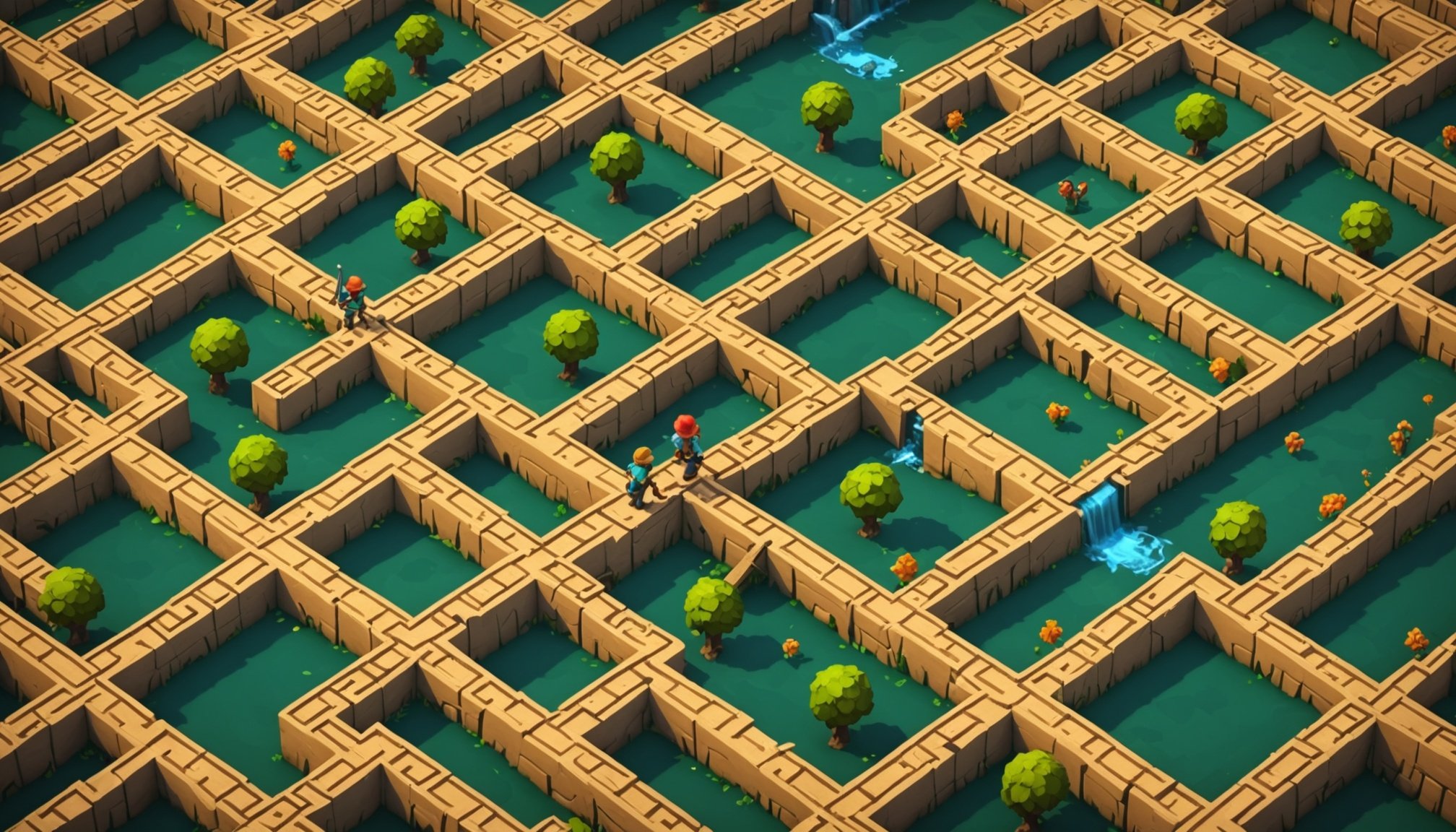Overview of Cross-Platform Multiplayer Game Development
Cross-Platform Development has revolutionised the creation of multiplayer games, allowing gamers to connect and play with others irrespective of the device they use. This innovation introduces features that ensure seamless gameplay across multiple devices, ensuring gamers experience virtually no disruptions while switching between platforms.
The central aspect of cross-platform features is to maintain game integrity and functionality across different devices such as consoles, PCs, and mobile phones. Thus, consistency in user experience becomes imperative. Developers aim to provide a unified gaming environment where every player, no matter the platform, has access to the same features and gameplay quality.
Have you seen this : Innovative Tactics for Smoothly Incorporating Voice Recognition into Narrative Video Games
In recent years, the gaming industry has seen a significant trend towards promoting cross-platform experiences. This is largely fuelled by player demand for flexibility and connectivity. Players enjoy the freedom to engage with friends who use different gaming systems, fostering inclusivity and broadening the player base.
Such advancements not only benefit players but also game developers, who can expand their audience and increase player retention. By prioritising cross-platform development, the gaming industry continues to innovate and meet the diverse needs of global gamers.
In the same genre : Infinite Landscapes: The Impact of Procedural Generation on Survival Game Environments
Network Latency and Performance Issues
Network latency is a crucial factor affecting the performance of multiplayer games. Understanding and managing latency ensures a smoother gaming experience across platforms. High latency can lead to delays in actions and responses, disrupting gameplay harmony. So, how can developers address this? By implementing performance optimization techniques.
Understanding Network Latency
Latency is the time taken for data to travel between the player’s device and the game server. In multiplayer environments, low latency is vital as it directly impacts action synchronization and real-time interaction.
Techniques for Reducing Latency
Several strategies can be employed to minimize latency. Performance optimization can include optimizing the game code, reducing data packets, and using fast servers close to users. These methods help in maintaining efficient data transmission speeds.
Tools for Monitoring Network Performance
Utilizing tools to monitor network performance is essential. Tools like PingPlotter, Wireshark, and NetLimiter provide insights into data flow and signal strength. They enable developers to diagnose issues and fine-tune connectivity. By continuously assessing network performance, adjustments can be made to ensure longevity in seamless cross-platform experiences.
Adopting these strategies and tools not only enhances player satisfaction but also extends the game’s overall lifespan and reach.
Key Obstacles in Cross-Platform Multiplayer Games
Developing cross-platform multiplayer games presents several game development challenges. A significant hurdle is the technical issue associated with synchronising gameplay across distinct devices and operating systems. Unlike single-platform games, these require extensive code compatibility and harmony to maintain an optimal experience for all users.
Common Technical Challenges
The diversity of hardware specifications across platforms often results in inconsistencies in game performance. Developers encounter challenges in ensuring that games run smoothly on various configurations, from high-end consoles to average mobile devices. This can frequently lead to cross-platform issues, such as graphical glitches or frame rate drops.
Impact of Varying Hardware Specifications on Gameplay
Differences in hardware specifications can greatly affect a game’s performance, making cross-platform consistency difficult to achieve. The disparity in processing power and graphics capabilities must be carefully managed to ensure fair gameplay, regardless of the player’s device.
Overview of Case Studies Highlighting Key Obstacles
Specific case studies provide insights into these obstacles, showcasing how teams overcame them. Games like Fortnite have managed to maintain seamless gameplay across multiple platforms by investing in robust infrastructure and employing efficient synchronization techniques to bridge the gap between different systems.
Compatibility Across Different Platforms
Creating a unified gaming experience is at the core of Cross-Platform Development. The range of platforms, each with its own compatibility challenges, demands unique solutions to maintain game integrity. Developers must address the varied requirements across operating systems, such as Windows, macOS, and Linux, along with gaming consoles like PlayStation and Xbox.
Platforms and Their Unique Challenges
Every platform presents distinct hurdles; consoles may restrict hardware configurations while PCs and mobile devices vary in specifications and performance. Ensuring multi-platform support, therefore, involves crafting solutions that cater to these diverse constraints, allowing seamless gameplay.
Strategies for Ensuring Compatibility
To handle these challenges, developers often employ cross-platform engines, such as Unity and Unreal Engine. They facilitate uniform experiences by abstracting hardware differences. Additionally, ongoing compatibility testing across devices helps maintain performance consistency, identifying issues early in the development cycle.
Case Studies of Successful Compatibility
Successful cross-platform games, like Apex Legends, illustrate effective platform compatibility. By leveraging adaptable engines and investing in broad testing, these games provide consistent player experiences irrespective of the device. Understanding these methodologies can aid developers in overcoming compatibility hurdles and expanding their game’s reach.
User Interface and Design Considerations
The user interface design in multiplayer games is pivotal to creating engaging environments for gamers across various platforms. Crafting adaptable interfaces ensures that players on consoles, PCs, and mobiles enjoy a uniform experience.
UI Design Principles for Multiplayer Games
Designing interfaces for multiplayer games requires a balance between intuitive controls and immersive visuals. This helps ensure players can easily navigate and engage with game features regardless of their device. An effective UI should provide clear feedback and minimal clutter, enhancing the player’s focus on gameplay itself.
Responsive Design Techniques
To address the challenges of different screen sizes and resolutions, developers employ responsive design techniques. These techniques allow elements within the game UI to adjust dynamically, maintaining usability and aesthetics across devices. Implementing techniques like flexible grids and scalable graphics helps achieve consistency without compromising functionality.
Usability Testing Strategies
Gathering user feedback is crucial for refining UI elements. Usability testing strategies include soliciting real-time responses from players during beta phases and employing analytics to assess interaction patterns. By analyzing gamer feedback and behaviour, developers can make informed adjustments, ensuring the interface meets diverse user expectations and enhances overall gaming experiences.
Server Management and Scalability
As multiplayer games expand, effective server management and game scalability become pivotal to ensuring smooth performance and player satisfaction. A robust server infrastructure supports these complex environments, balancing player load and maintaining consistent gameplay.
Essentials of Game Server Architecture
A well-designed game server architecture is vital for reliable multiplayer experiences. This architecture is responsible for handling requests, managing player interactions, and ensuring real-time data synchronization. Key components include dedicated game servers, databases for player information, and scalable cloud-based services that allow dynamic resource allocation.
Load Balancing Techniques
To handle fluctuating player numbers, load balancing is crucial. By distributing incoming traffic evenly across multiple servers, load balancing optimizes resource use and prevents server overload. Techniques such as round-robin distribution and automated scaling allow for efficient load management, ensuring uninterrupted gameplay even during peak times.
Real-World Server Management Case Studies
Several gaming companies demonstrate effective server management strategies. For instance, Epic Games utilizes dynamic scaling for Fortnite, leveraging cloud servers to adjust resources as player numbers vary. This approach minimizes latency and supports millions of simultaneous players, showcasing the importance of adaptive server strategies in maintaining high-quality gaming experiences.
Emerging Technologies in Game Development
As the gaming landscape evolves, Emerging Technologies are shaping the future of Cross-Platform Development. These innovations enhance the adaptability and quality of multiplayer games, providing cutting-edge experiences for players.
Role of Cloud Gaming in Cross-Platform Development
Cloud gaming is pivotal for seamless game experiences. By offloading processing tasks to powerful servers, players across different devices access high-performance games without requiring top-tier hardware. This technology minimises device constraints and broadens accessibility, enabling consistent experiences across platforms.
Utilizing AI to Enhance Gameplay
Integrating artificial intelligence in game development significantly optimises gameplay. AI analytics assess player behaviour, leading to tailored in-game experiences that adapt to individual skills. This dynamic customization enhances player engagement and satisfaction, making AI an invaluable tool for developers.
Future Trends in Cross-Platform Technologies
Looking ahead, advancements in virtual and augmented reality promise to further revolutionize gaming. Enhanced realism and interactivity are anticipated, ushering in novel ways players can experience cross-platform gaming. Continued improvements in network infrastructure will also minimise latency, ensuring smoother, more responsive interactions across platforms.
Embracing these emerging technologies enables developers to not only meet current player expectations but also anticipate future demands in the dynamic world of gaming.











